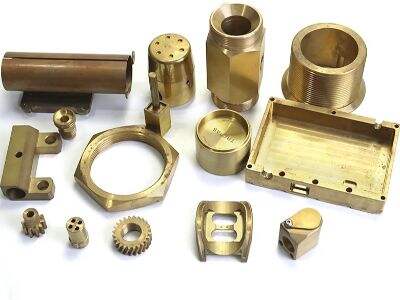At Swords Precision, we understand that for any business manufacturing a metal part can be quite the task. Many places, such as for cars and planes… and also many machines require metal parts. Because these are such crucial elements, you need to make especially careful decisions about how you’re going to execute them. 2 MAIN METHODS OF MOLDING METAL PARTS Metal stamping and classic process of traditional machining are two of the most common processes for production. This post is intended to examine pros and cons of these two methods. Here on the basis of this they will come to know which one fits the most for their business.

So, Which One Will Suit Your BusinessThe Best?
When you are trying to choose between metal stamping and traditional machining like the CNC Machining, there are some very significant things that you must also pay attention to. The FIRST thing you need to do is determine the kind of part you want to create. A simpler or more complex pattern? But think about how many pieces you will have to build after this. Do you need many of them, or just a few? Last but not least, figure out how much you are ready to invest in this. Every method has its advantages and disadvantages so you should know about them both before choosing.
Comparison Between Metal Stamping vs Traditional Machining Pros and Cons
Metal Stamping Pros:
It would be inefficient to cut each part separate from the rest, which is one big reason that metal stamping can cut many thousands of parts in a single day. This method allows you to fulfill that order if you get one big one.
One of the advantages metal stamping serves is that this process maintains close tolerances and creates very precise parts to exacting specifications. So that way all the parts will be in the same unity of the end product.
Moreover, it can employ different materials — an equally big pro. This would then allow you to choose which material is best suitable for your parts.
Metal stamping are also more cost-effective whe n producing your product at a large-scale. This could end up being advantageous for your company in the long run.
Metal Stamping Cons:
However, metal stamping and Casting also has some disadvantages — it will NOT be advantageous to you if you need few parts and wish to lower the manufacturing cost. But when your order is small, you have to take this into account.
Well that is not the case with metal stamping. This method will be hard for you if you prefer a different shape.
Metal stamping is handy, but it may limit things you can make and setup with a die very costly! If your design is complex, you might need another approach.
The third limitation is that metal stamping cannot be used on materials that are difficult to stamp. It does help more in being a price barrier and the number of materials you are limited to.
Traditional Machining Pros:
Meanwhile, classical machining pays off too. Excellent for producing complex prototypes and parts Pros: If your design is already finalized, this can be an excellent solution.
Traditional machining: also use a variety of materials as in equations 6–8. You get increased selection for selecting parts materials.
If you only need a few parts produced for your business, traditional machining may be cheaper when it comes to tooling costs. This is a more cost-effective option for smaller orders.
This is great for building prototypes as well. For example, if you have a new product design that needs to be proofed — an initial test is likely able to be performed with traditional machining
Traditional Machining Cons:
However, this parent may change so that holes are updated. Traditional machining also has its limitation. The main issue is that parts often take longer to make than metal stamping. Actually, it can be a problem if you need parts quickly.
In addition, in high quantities traditional machining can be more cost-effective. Well, now pretend you were producing packs of the parts and this approach isn't optimal.
The benefit of such cutting is that, compared to some more common machining methods, the parts will be cut with less precision and consistency. These differences can impact the output.
Finally, traditional machining can also only be used to make small parts. If your components are wider, it may not work as well.
Metal Stamping vs Conventional Machining
Metal Stamping:
Dream Tech Take: Dream Tech A technique through which sheet material can be developed into a particular shape with the help of Metal Stamping tomb die, where in a die the shee crude to form is cut. Moldability: The mold cut the metal in any shape which ever you like. This aqueous wash process is one of the fastest and most cost-effective ways to clean large part counts. Ideal for straighten or dart cutouts but not as great when intricate design patterns need to be followed or complex shapes requires cutting.
Traditional Machining:
Conversely, in the traditional machining you have a material that is a block and parts are removed to get to the final shape alone. Traditional machining variety such as drilling, milling, turning et c., may be great for complex delicate forms but when you have to deliver mass parts quickly it can take too long.
Things to Think About
However, there are several important factors to take into account when selecting the one you will be using the most:
Shape Complexity: Metal stamping works best for flat and cambered profiles. But you may have to fall back on a single-point gun drilling technique if the mix of your design requirements is especially difficult.
Speed: Metal stamping is much faster- Large quantities of parts are more amenable with a shorter processing time by utilizing metal stamping. If you need very few, the old-fashioned way of machining may be faster.
Design choices restrict metal stamping to some extent. In contrast, most machined parts can be made in pretty much whatever shape you want.
Material : As a rule of thumb, metal stamping is for when you have very thin materials and traditional machining works well with quite a number of disparate materials,
If you produce a little at a time, the tooling will be more expensive —Stamping has higher tool costs for anything less than 1 part The statement above is the opposite of the previous, traditional machining may get expensive for large orders.
Highlight of Metal Stamping vs Traditional Machining
Metal stamping using Sheet Metal, finally, is great for producing a lot of parts quickly and shines in flat shapes as well as relatively shallow curved shapes. They are CAD-correct and completely reproducible Results parts. However, it is a block model so no much design can be performed and also has nowhere for complex shapes. On the other hand, more traditional machining is appealing for small-run orders and complex shapes. It may be slow and not as precise but it can handle a wide variety of materials to create any part you desire.

